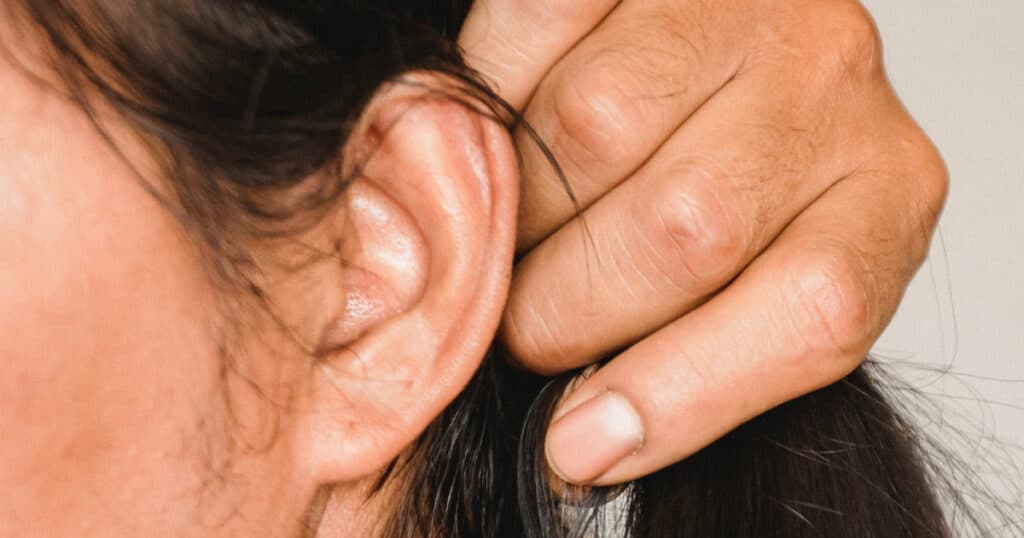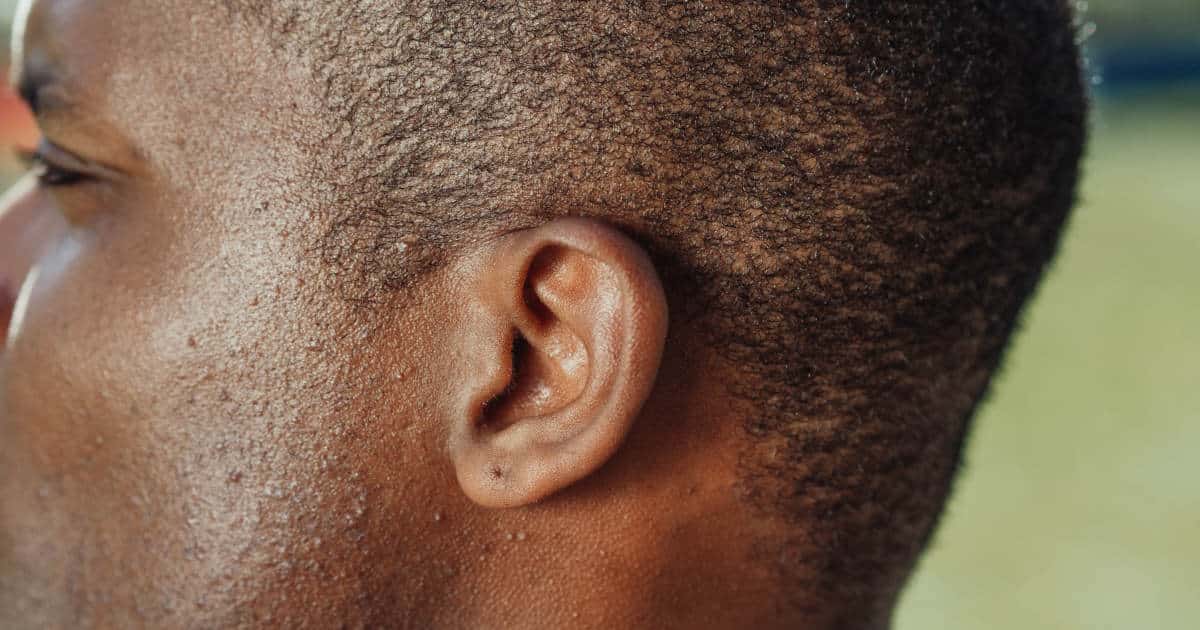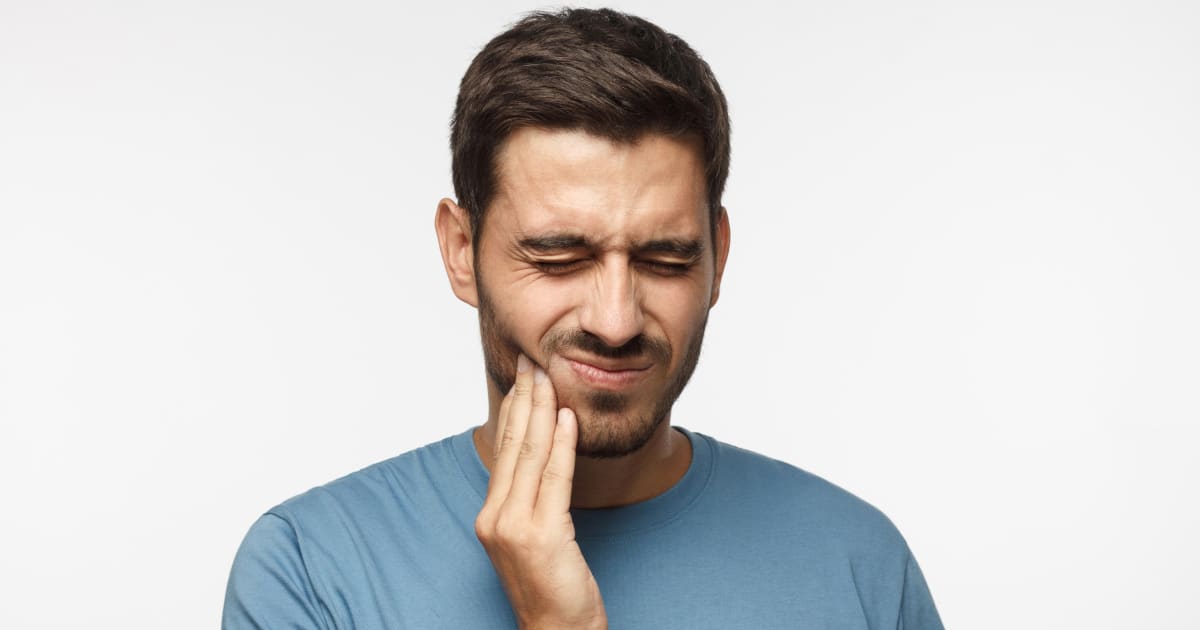Somatic tinnitus, also called somatosensory tinnitus, is a form of tinnitus that can be brought on by pain or tension in the muscles or fascia of your jaw or neck. As of right now, there is a limited amount of information available about somatic tinnitus. This article aims to present what is currently known. It’s important to have an overview of tinnitus to understand somatic tinnitus.
1. What is Tinnitus?
Tinnitus is an awareness of a ringing, whistling, or humming when no external sound is present (meaning you’re the only one who can hear the noise.) It is estimated that 10-15% of adults suffer from tinnitus. 1)
You may hear the sound in one or both of your ears. Tinnitus may be acute (it begins suddenly and usually clears up within three months) or chronic (it lasts longer than three months).
Tinnitus is not a disease; it’s a symptom of another condition. Sometimes, tinnitus can lead to secondary conditions like depression, anxiety, and insomnia.
There are two main forms of tinnitus, pulsatile and subjective.
Pulsatile tinnitus (also known as objective tinnitus) is a rare form. The sound you hear may be a rhythmic wooshing timed with your pulse, which indicates that pulsatile tinnitus is a symptom of a circulatory system condition. Or, you may hear a clicking sound because your head or ear muscles are contracting.
During an examination, a doctor may be able to hear the sounds.
The most common form of tinnitus is subjective tinnitus. 2) Subjective tinnitus has been described as ringing, buzzing, hissing, sizzling, or clicking. The sound may be continuous or irregular, and the volume can range from low to high. In some cases, the tinnitus is so loud that it affects concentration, sleep or blocks out external sounds.
Subjective tinnitus may be caused by:
- An infection in the middle ear (otitis media) or inner ear (labyrinthitis).
- An ear canal blockage. A buildup of earwax, dirt, or a foreign substance may block your ear canal.
- Presbycusis, or age-related hearing loss (ARHL).
- Constant noise exposure. Subjective tinnitus is common among construction workers, people who work in noisy factories, and musicians.
- Medication. Certain anti-inflammatories, broad-spectrum antibiotics, cancer drugs, diuretics, and anti-depressants have been known to cause tinnitus.
- A perforated eardrum (ruptured eardrum). Your eardrum is a thin tissue layer separating the outer ear from the middle ear. A middle ear infection, rapid changes in air pressure (common during air travel), sudden loud sounds, or severe trauma to the head can cause a hole or a tear to develop in the eardrum.
- Otosclerosis. This condition occurs when three tiny bones in your middle ear (malleus, incus, and stapes) fuse, blocking sound from travelling through your ear.
- Meniere’s disease. This is a rare condition that occurs when your inner ear produces an excessive amount of fluid.
- Sudden deafness. Also known as sudden hearing loss and acute hearing loss, sudden deafness happens when you rapidly lose your ability to hear. Typically, sudden deafness occurs in one ear. The exact cause is unknown.
- An acoustic neuroma (vestibular schwannoma), which is a non-cancerous tumour that develops in the ear.
- A brain tumor. Brain tumors are growths of abnormal cells in the brain. They can be cancerous (malignant) or non-cancerous (benign).
- A traumatic brain injury. A TBI is an injury, like a concussion, that results in the loss of normal brain function.
- Multiple sclerosis. MS is a condition that affects the brain, spinal cord, and central nervous system.
Often, the cause of subjective tinnitus is unknown.
2. What is Somatic Tinnitus?
Somatic tinnitus, also known as somatosensory tinnitus, is a form of subjective tinnitus. It’s sometimes called somatosensory tinnitus because it’s triggered by the somatosensory system, a part of your nervous system that senses pain, temperature, touch, and the position and movement of your head and body. 3) The somatosensory system of your cervical spine (neck) and temporomandibular (jaw) sends information to your brain and auditory system, which means it impacts your hearing.
3. What Causes Somatic Tinnitus?
Somatic tinnitus results from muscle contractions or muscle tension in the neck or jaw. It may be triggered by:
TMD (temporomandibular disorders)
Temporomandibular disorders are problems with your jaw or face muscles that control your jaw. Temporomandibular disorders include:
- dislocated jaw,
- an injury to the jaw,
- osteoarthritis or rheumatoid arthritis,
- bruxism (grinding or clenching your teeth),
- pain in the muscles or fascia (a thin connective tissue that covers and supports your muscles and organs) of the jaw, neck, and shoulders.
Cervical spine disorders
The seven vertebrae in your neck form your cervical spine. Common cervical spine disorders include:
- A slipped disc. Also called a ruptured or herniated disc, a slipped disc is when one of the discs between your vertebrae (intervertebral discs) tears and the centre leaks through the opening.
- Degenerative disc disease. This condition occurs when the intervertebral discs wear down, usually because of ageing.
- Osteoarthritis or rheumatoid arthritis.
- Bone spurs, which are growths that form on the vertebrae of your cervical spine.
- A pinched nerve.
A sternocleidomastoid muscle (SCM) spasm
You have two sternocleidomastoid muscles, one on each side of your neck. The SCM runs from the base of your skull just behind your ear to your breastbone and collarbone. Your SCM helps you balance your head, turn it left and right, and tilt it side to side and front to back.
A sternocleidomastoid muscle spasm can be caused by the following:
- Unhealthy posture (ex. craning your neck to look at a computer screen or phone).
- Sleeping in an awkward position or on a pillow that doesn’t support proper spinal alignment.
- Twisting your neck.
Moving your neck or head or nerve activity in your neck may change:
- the volume of the sound,
- how high or low the sound is,
- where in your head the sound is coming from.
4. Takeaway
Somatic tinnitus is a form of subjunctive tinnitus that’s caused by muscle tension in the neck or jaw. If you’ve been diagnosed with somatic tinnitus, these jaw and neck exercises may be able to help you manage the condition.
Sources & Studies
- ↑1 Michiels, S., van der Wal, A. C., Nieste, E., Van de Heyning, P., Braem, M., Visscher, C., Topsakal, V., Gilles, A., Jacquemin, L., Hesters, M., & De Hertogh, W. (2018). Conservative therapy for the treatment of patients with somatic tinnitus attributed to temporomandibular dysfunction: study protocol of a randomised controlled trial. Trials, 19(1), 554. https://doi.org/10.1186/s13063-018-2903-1.
- ↑2 Michiels, S., Naessens, S., Van de Heyning, P., Braem, M., Visscher, C. M., Gilles, A., & De Hertogh, W. (2016). The Effect of Physical Therapy Treatment in Patients with Subjective Tinnitus: A Systematic Review. Frontiers in neuroscience, 10, 545. https://doi.org/10.3389/fnins.2016.00545.
- ↑3 Jacobs, K.M. (2011). Somatosensory System. In: Kreutzer, J.S., DeLuca, J., Caplan, B. (eds) Encyclopedia of Clinical Neuropsychology. Springer, New York, NY. https://doi.org/10.1007/978-0-387-79948-3_359.
Home Exercises for Tinnitus
Download our FREE PDF guide and get 6 easy-to-follow exercises for tinnitus you can do at home.

JOIN OVER 30,000 SUBSCRIBERS WHO ARE MANAGING THEIR PAIN THEMSELVES.

Sign up for The Pain Relief Advisor and each week we’ll deliver free expert pain management content right to your inbox.
All gain. No pain.
If you have somatic tinnitus, you might also be interested in:
Tinnitus: Causes, Treatment, and Exercises
Our Encyclopedia Article includes what you need to know about the causes and symptoms of tinnitus. Also includes additional treatment exercises.
Become a Tinnitus ExpertJaw and Neck Exercises for Tinnitus
If you have tinnitus because of tight muscles or fascia in the jaw or neck, you may have somatic tinnitus. These stretches and massages may help.
Try Our Tinnitus ExercisesBruxism Exercises
Bruxism causes you to gnash your teeth or clench your jaw without realizing it. Relieve jaw tension and soreness with this 10-minute routine.
Soothe Sore Jaw Now




